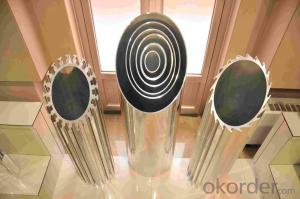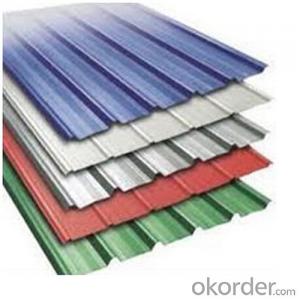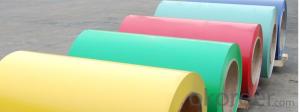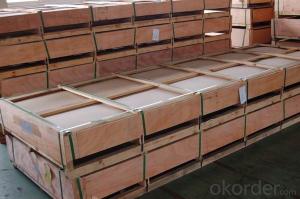Aluminum Profiles for Car Anticollision Beam Energy Absorption Part
- Loading Port:
- Shanghai
- Payment Terms:
- TT OR LC
- Min Order Qty:
- 5 m.t.
- Supply Capability:
- 1000 m.t./month
OKorder Service Pledge
OKorder Financial Service
You Might Also Like
Item specifice
1. Structure of Aluminum Profiles for Car Anticollision Beam Energy Absorption Part Description
Aluminum Profiles for Car Anticollision Beam Energy Absorption Part is one semi-finished aluminium material. It is suitable for belt pulley with all cross sections in mechanical engineering and resistant to corrosion and antioxidant. Its weight is much lower than steel. So many customers choosed aluminium material instead of steel.
2. Specification of Aluminum Profiles for Car Anticollision Beam Energy Absorption Part
Aluminum Profiles for Car Anticollision Beam Energy Absorption Part | |
Main Specification | |
Alloy | AA1xxx (AA1050, AA1060, AA1070, AA1100 etc.) |
AA3xxx (AA3003, AA3004, AA3005, AA3105 etc.) | |
AA5xxx, AA6XXX (AA5052,AA5083, AA5754, AA6061, AA6062 etc.) | |
AA8xxx(AA8011, AA8006 etc.) | |
Temper | H14,H16, H18, H22, H24, H26, H32,O/F, T4, T6, T651 |
Thickmess | 0.01mm-100mm |
Width | 30mm-1700mm |
Standard | GB/T 3880-2006/ASTM |
Special specification is available on customer's requirement | |
3. Application of Aluminum Profiles for Car Anticollision Beam Energy Absorption Part
(1).Interior: wall cladding, ceilings, bathrooms, kitchens and balconies, shutters, doors...
(2).Exterior: wall cladding, facades, roofing, canopies, tunnels,column covers , renovations...
(3).Advertisement: display platforms, signboards, fascia, shop fronts...
4. Feature of Aluminum Profiles for Car Anticollision Beam Energy Absorption Part
Surfact Quality :
Be free from Oil Stain, Dent, Inclusion, Scratches, Stain, Oxide Dicoloration, Breaks, Corrosion, Roll Marks, Dirt Streaks and other defect which will interfere with use,
Mechenical Property:
Chemical Composite and Mechanical Property
5. Certificate of Aluminum Profiles for Car Anticollision Beam Energy Absorption Part
SGS and ROHS(if client request, paid by client), MTC(plant provided), Certificate of Origin(FORM A, FORM E, CO), Bureau Veritas and SGS (if client request, paid by client), CIQS certificate
6. Image of Aluminum Profiles for Car Anticollision Beam Energy Absorption Part
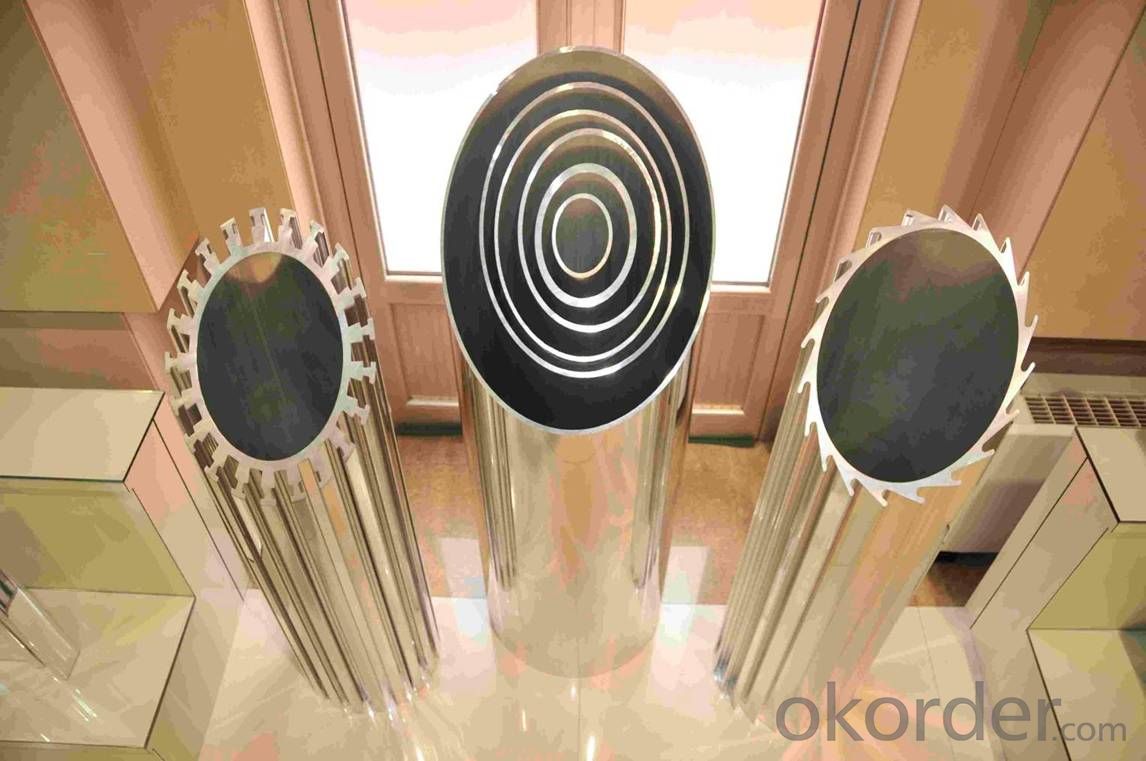

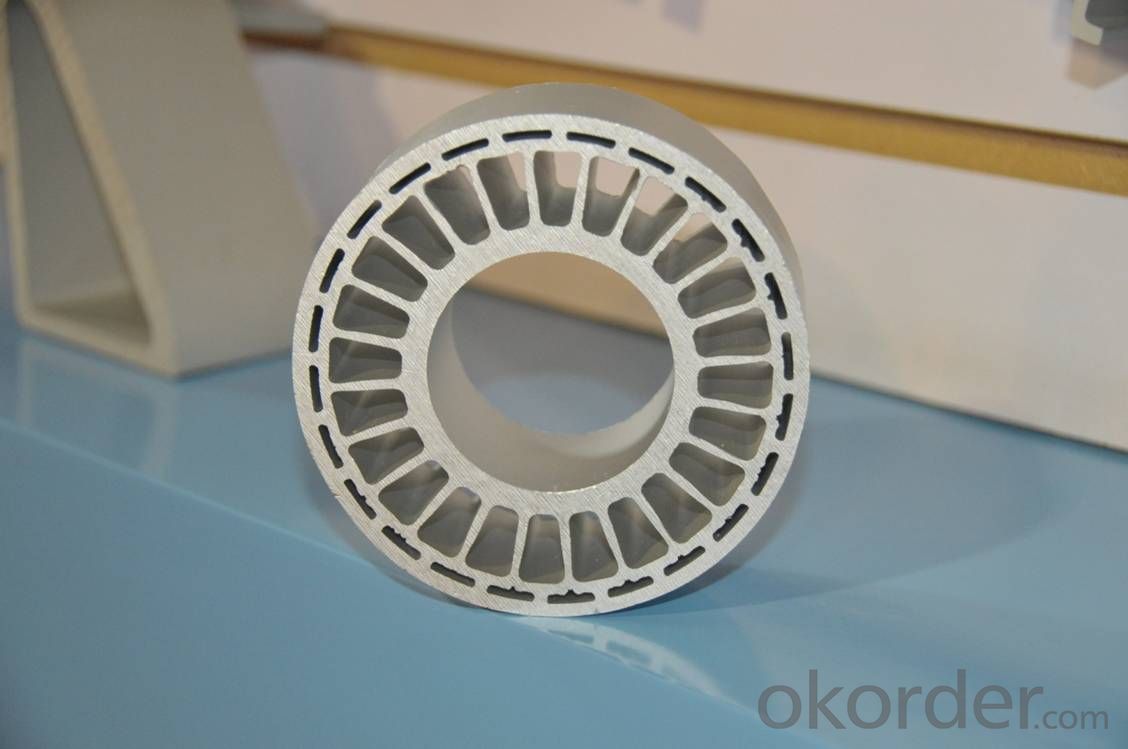
7. Package and shipping of Aluminum Profiles for Car Anticollision Beam Energy Absorption Part
First, plastic cloth with drying agent inside; Second, Pearl Wool ; Third, wooden cases with dry agent , fumigation wooden pallets, aluminum surface could cover blue PVC film
8. FAQ
1) What is the delivery time?
Depends on actual order, around 20 to 35 days
2) What is the QC system:
We have QC staff of 20 persons and advanced equipment, each production is with MTC traced from Aluminum ingot lot.
3) What market do you mainly sell to?
Australia, America, Asia, Middle East, Western Europe, Africa etc
- Q:What is the tensile strength of aluminum sheets?
- The tensile strength of aluminum sheets can vary depending on the specific alloy and temper of the material. However, on average, aluminum sheets typically have a tensile strength ranging from 10,000 to 45,000 pounds per square inch (psi). It is important to note that different grades and thicknesses of aluminum sheets will have different tensile strength values. Additionally, factors such as heat treatment, processing, and alloy composition can also affect the tensile strength of aluminum sheets. Therefore, it is necessary to consult the manufacturer's specifications or perform specific tests to determine the precise tensile strength of a particular aluminum sheet.
- Q:What is the density of aluminum sheets?
- The density of aluminum sheets is subject to variation based on the particular alloy and thickness of the sheet. On average, aluminum sheets have a density ranging from 2.6 to 2.8 grams per cubic centimeter (g/cm³). It is worth mentioning that this figure may undergo slight modifications as a result of the precise manufacturing process and any additional coatings or treatments administered to the sheets.
- Q:What are the different types of aluminum sheets available in the market?
- There are several different types of aluminum sheets available in the market, including plain aluminum sheets, tread plates, perforated aluminum sheets, and decorative aluminum sheets.
- Q:Does anyone know anything about the value of aluminum can(beer, soda, etc.) pull tabs? I have heard a rumor that the tabs are worth more than the cans and that a gallon jug of tabs can be sold at recycling centers for several hundred dollars.Anyone know if this is really true?
- This Site Might Help You. RE: value of aluminum can pull tabs? Does anyone know anything about the value of aluminum can(beer, soda, etc.) pull tabs? I have heard a rumor that the tabs are worth more than the cans and that a gallon jug of tabs can be sold at recycling centers for several hundred dollars.Anyone know if this is really true?
- Q:Can aluminum sheets be easily shaped or bent into desired forms?
- Yes, aluminum sheets can be easily shaped or bent into desired forms. Aluminum is a highly malleable metal, which means it can be easily manipulated without breaking or cracking. Its low density and high strength-to-weight ratio make it an ideal choice for various applications where shaping or bending is required. Aluminum sheets can be shaped or bent using a variety of methods, including press-braking, roll-forming, or using specialized tools such as a sheet metal brake. The ease of shaping or bending aluminum sheets also makes it a popular choice for industries such as automotive, aerospace, construction, and manufacturing, where customized forms and designs are often needed.
- Q:What is the difference between aluminium plate 5A05 and 5A06?
- The aluminum plate doesn't have this material. Have you made a mistake?Give you a full one,1, pure aluminum: Material: 1050/1060/1070/1100/ 1200/ thickness: 0.1---20mm width: 800---2200mm2, alloy aluminum: Material: 2A21/3003/5052/5083/6061/6082 /8011 thickness: 0.5---260mm width: 800---2800mm3 curtain wall Kaiping aluminum plate: Material: 1060/1100 thickness 0.95, 1.35, 1.85, 2.35, 2.7, 2.85mm, width 0.8---1.5m
- Q:Are aluminum sheets suitable for food contact applications?
- Yes, aluminum sheets are suitable for food contact applications. Aluminum is a non-toxic and non-reactive metal that does not leach harmful substances into food. It is widely used in the food industry for packaging, cooking utensils, and food storage containers. Additionally, aluminum exhibits excellent heat conductivity and can be easily cleaned, making it a popular choice for food-related applications.
- Q:I have an aluminum block engine in my wakeboard boat which is built for the lakes, now i live on salt water and was wondering the effect saltwater would have on the engine block as water goes through to cool it.
- Munch Munch better flush when done.
- Q:What are the different methods of surface protection for aluminum sheet?
- To enhance the durability and resistance of aluminum sheet against external factors, there are several methods of surface protection that can be employed. One method commonly used is anodizing, which involves an electrochemical process that creates a thick oxide layer on the aluminum surface. This provides corrosion resistance, improves wear resistance, and allows for customizable colors through the use of dyes. Another technique is powder coating, where a dry powder is applied to the aluminum surface and then heated to form a durable and protective layer. Powder coating offers excellent resistance against chemicals, UV rays, scratches, and provides a wide range of color options. Laminating is also utilized to protect aluminum sheets by applying a thin layer of protective film to act as a barrier against scratches, dirt, and moisture. This method is commonly used for temporary protection during transportation or storage. Chemical conversion coating is another method employed to protect aluminum surfaces. It involves treating the aluminum with a chemical solution to create a thin protective layer. This coating enhances corrosion resistance and improves paint adhesion. Clear coating can be applied to aluminum sheets to provide a protective layer without changing the appearance of the metal. These coatings can be either solvent-based or water-based, offering resistance against corrosion, scratches, and UV rays. Lastly, mechanical finishes such as brushing or polishing can be used to protect aluminum surfaces. These finishes create a smooth and visually appealing surface while providing some level of protection against corrosion and wear. In conclusion, the different methods of surface protection for aluminum sheet offer varying levels of durability, corrosion resistance, and aesthetic options depending on specific requirements and applications.
- Q:Can aluminum sheet be used for electrical conductivity applications?
- No, aluminum sheet can be used for electrical conductivity applications. Aluminum is a highly conductive metal, second only to copper in terms of electrical conductivity. It is commonly used in electrical wiring, power transmission lines, and electrical components. Aluminum sheets can be used in applications where electrical conductivity is required, such as in the construction of electrical panels, bus bars, and heat sinks. However, it is important to note that the thickness and purity of the aluminum sheet can affect its conductivity, so these factors should be considered when choosing the appropriate aluminum sheet for a specific electrical application.
1. Manufacturer Overview |
|
|---|---|
| Location | |
| Year Established | |
| Annual Output Value | |
| Main Markets | |
| Company Certifications | |
2. Manufacturer Certificates |
|
|---|---|
| a) Certification Name | |
| Range | |
| Reference | |
| Validity Period | |
3. Manufacturer Capability |
|
|---|---|
| a)Trade Capacity | |
| Nearest Port | |
| Export Percentage | |
| No.of Employees in Trade Department | |
| Language Spoken: | |
| b)Factory Information | |
| Factory Size: | |
| No. of Production Lines | |
| Contract Manufacturing | |
| Product Price Range | |
Send your message to us
Aluminum Profiles for Car Anticollision Beam Energy Absorption Part
- Loading Port:
- Shanghai
- Payment Terms:
- TT OR LC
- Min Order Qty:
- 5 m.t.
- Supply Capability:
- 1000 m.t./month
OKorder Service Pledge
OKorder Financial Service
Similar products
New products
Hot products
Hot Searches
Related keywords
